Cruising in Micronesia is NOT as easy and nice as we had expected. Although the people in Kosrae are enormously friendly we are extremely pissed to wait for 10 days to get our cruising permit extended (by the Pohnpei immigration officials). Of course by then the better weather windows have passed. We wait another 3 days for what we hope to be an acceptable window promising winds of 12 knots of trade winds and leave for Lamotrek, more than 1000 miles further West.
But after the first 20 hours of sailing the wind is completely gone, so the engine has to do the work. More than 2 days of running the engine later we decide to stop in Pohnpei to get more Diesel and to wait for a better window.
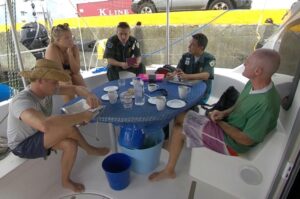
The first day we spend with the check in process, the officials all want to see us but some of them take quite a while to show up. Good coincidence however that the Foxy lady ties up to us for check out and we all spend the time waiting chatting, having coffee, cake and beer and sharing the experiences of the past few weeks.
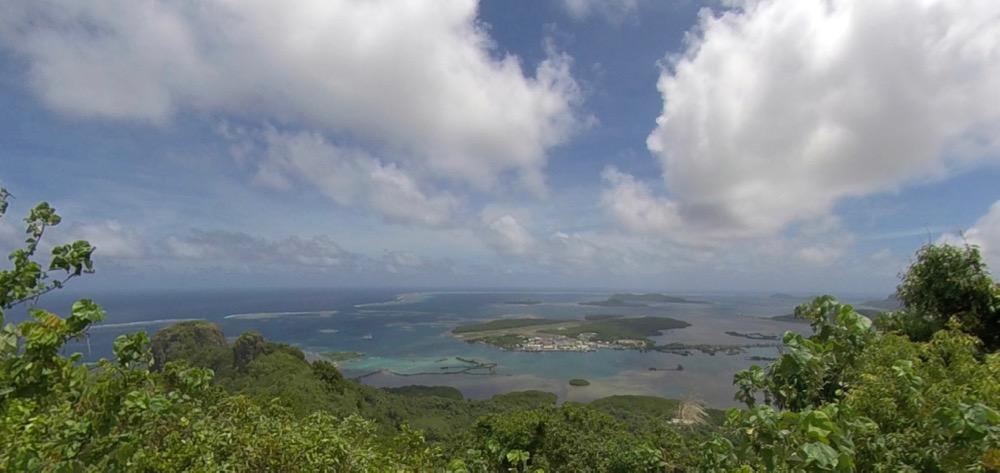
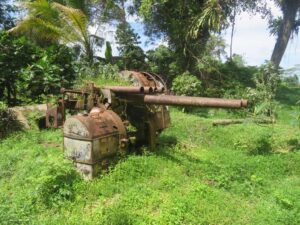
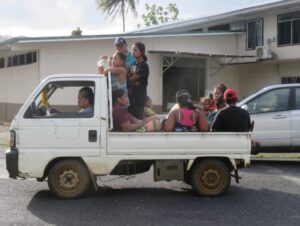
Pohnpei is surrounded by hills, so the first priority is to hike up the 300 meter high Sokeh’s Ridge. What a feeling! We do miss the mountains!!
Surrounded by Japanese guns and papaya trees we enjoy the views to the town of Colonia and the entrance channel we came in.
The town is ok for provisioning, the ship with fresh veggies just having arrived and there is some affordable beer.
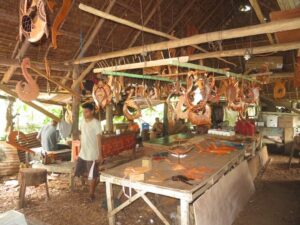
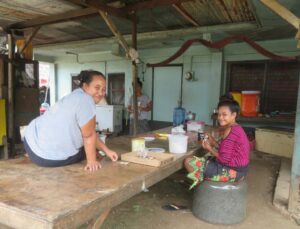
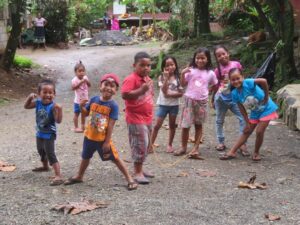
Most interesting I find the part of town that is called Kapingamarangi. The community here is part of the Kapingamarangi island community which is somewhere a few hundert miles to the southwest in the ocean. They came here more than 100 years ago after their island had been hit by a storm, but until today they live with the structures and customs of their home island. The women produce some beautiful handicrafts similar to what we have seen in the outer Marshall islands. The men are all experts in wood carving and in the afternoon they meet in the men’s house in oder to drink tuba, the fermented coconut “juice”.
After 10 days of mainly rain and only a sporadic gust of wind we check out on Thursday, April, the 4th, again with the target of Lamotrek, now 720 miles further West.
After a few engine hours the trades set in, we are happily sailing towards West.
During the first few days our fishing line almost stays quiet, only 3 times a bite gets ripped off after just a short moment.
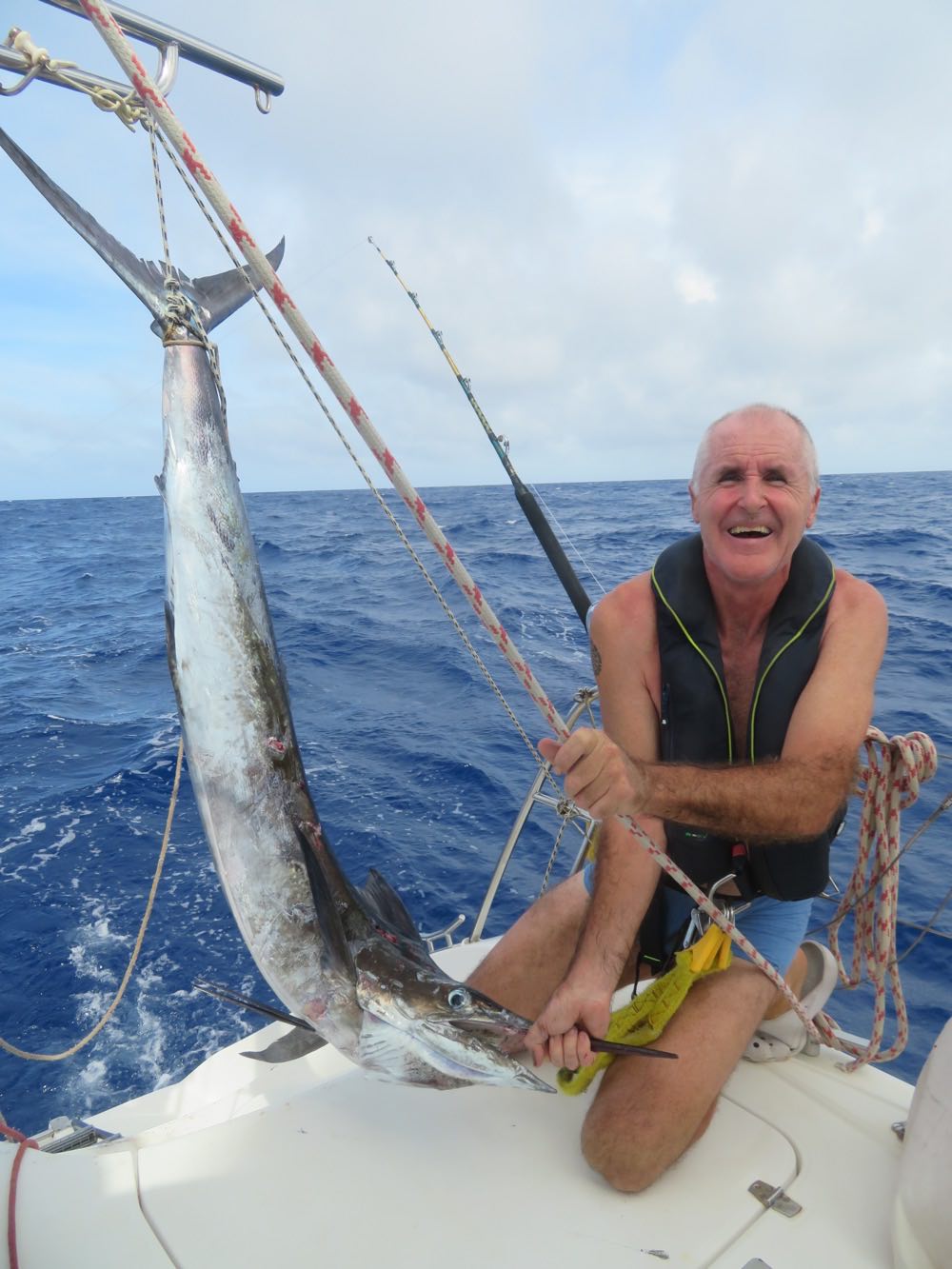
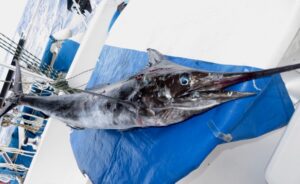
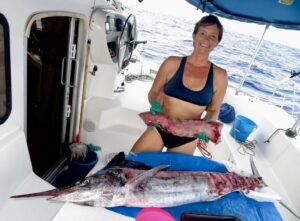
Reto shoots a spear directly through behind his head, manages to get the gaff hooked somewhere in his side and tows the huge fish onto the lowest step and underneath the bathing ladder, a well proven place for fighting fish.
Next thing we struggle to get the back fin secured, which is not so easy as the fish stands way out from the boat and the wind always blows the rope towards us. Little by little we get him on board, then my job begins – luckily the freezer is pretty empty…
After 725 miles in a bit more than 6 days we attach our She San to one of the moorings in Lamotrek, we are more than happy with the passage and are curious we is expecting us here.
Lamotrek
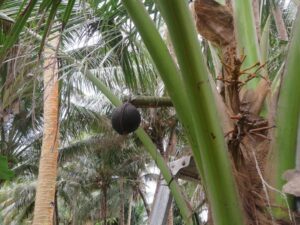
Of course we don’t take long to get ready for our first visit to the island, and as it is just afternoon 4 pm we find ourselves sitting right away in our first Tuba round. Here the local men meet everyday at 3 pm to “make decisions” as they claim, but basically to drink their tuba.
From the stem of the cut off flower of the coconut a juice is running out into a collecting vessel, often a coconut. In this vessel the juice is fermenting within only 12 hours to a 7 % alcoholic beverage, which I find quite amazing. Depending on the owner and the microflora he cultivates the result can be very nice or hardly drinkable, but always pretty alcoholic…
From Francis, the spokesmen we learn that we can also help the community instead of paying the 20 dollars per person landing fee.
Since we’d help anyway we start the next morning with the VHF antenna that got broken by the last Taifun. The first whole day we spend to get the antenna down, repair it, get it up, test, down,…. With a new, improvised one at least it works in the afternoon, then the Tuba drinking starts again.
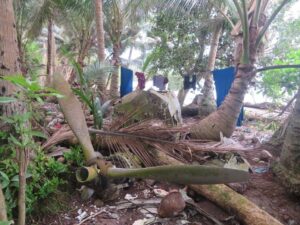
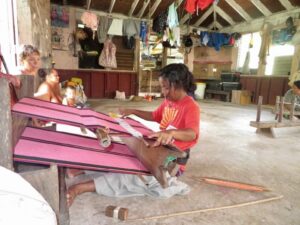
Before starting to work the following day we agree to first visit the village.
Francis shows us around, we see the remains of some Japanese seaplanes and meet the women of his family who are weaving their traditional clothing, the lavalava’s.
Because Lamotrek is one of the places where the wearing of the traditional dress is still wide spread and very much encouraged.
That means for the men a piece of cloth that is wrapped around the waist and sometimes sort of looks like a diaper. And for the women the Lavalava worn as a skirt and nothing else.
Exactly – nothing!! As surprising and unusual it is for us, here it is still as it had been in the centuries before the missionaries came.
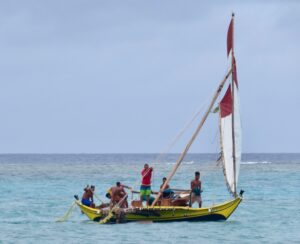
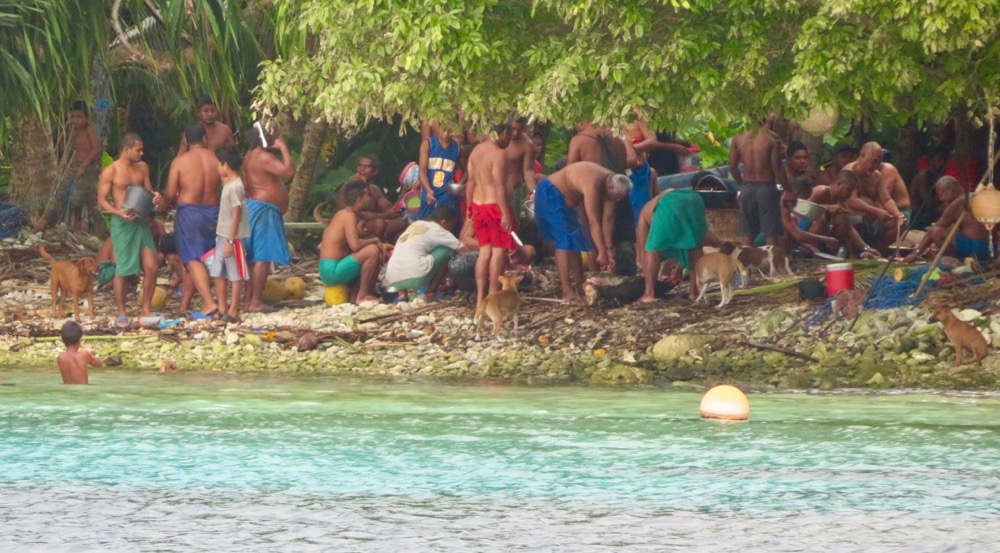
But also other traditions are still kept alive, such as the travelling by sailing canoes and the preference of turtles as their main protein source.
Then we get 4 lobsters and we really look forward, not having eaten lobster for quite a while. We eat the legs and claws first and until the next morning everything seems normal. But then it starts, Reto has a heavy diarrhea, then also vomiting, I have a light diarrhea. He spends the whole day in bed, in the middle of the night I wake up hearing a sound of something hitting She San.
I find him lying on the floor with the face down, unconscious… The whole face full with blood, sweating… He wakes up again but then I almost pass out…
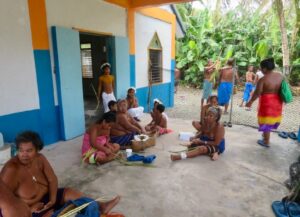
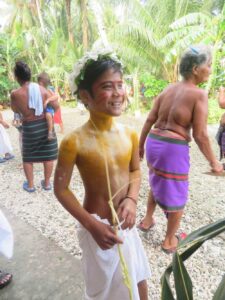
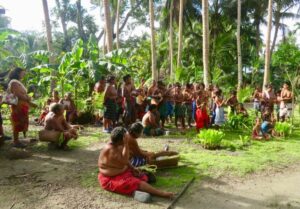
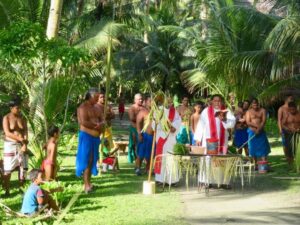
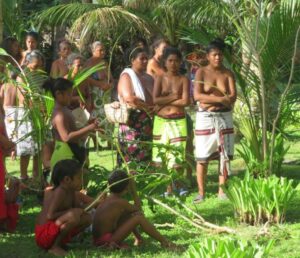
The next morning is Palm Sunday, I leave Reto sleeping and go by myself.
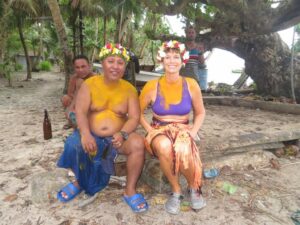
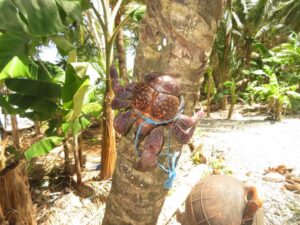
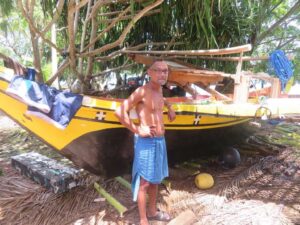
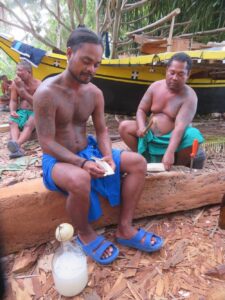
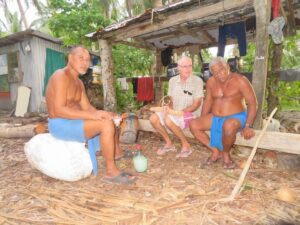
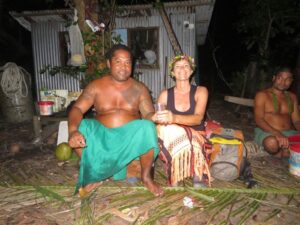
Luckily Reto already feels a lot better in Monday. We check out the parts of the village that we don’t know yet, get to know Chief Joe, who is also chief here and visit Xavier and the Tuba circle around him.
Here we feel a lot more welcome, the conversations are much more interesting and Reto’s repair service as well as the rope we bring as a gift are very well appreciated and immediately answered with return gifts.
Elato
Nevertheless we say goodbye to Lamotrek on the next day and sail the 13 miles over to Elato, the neighboring atoll. We arrive with a few presents and are immediately welcomed into the Tuba circle but we are relieved that there is only one circle here. Also we are pleasantly surprised to see that Chief John shares everything we bring with the rest of the group.
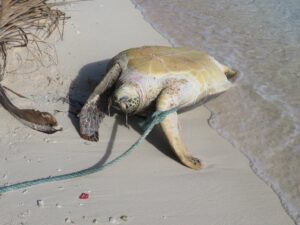
There is a lot of action on the beach, the dogs run around excitedly, the children nibble on bones.
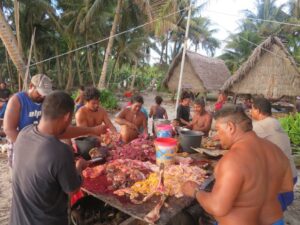
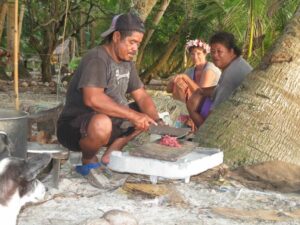
Also we get a share of the turtles, which John takes on for us and prepares for us a local creation (for yachties?), the “Turtle Burger”.
When I see how he puts the unfertilized eggs of the turle in the burger mass I almost have to go feed the fish…
But once fried I do eat a few bites, inly better without exactly thing what it really is.
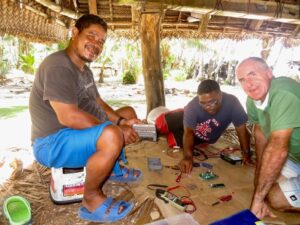
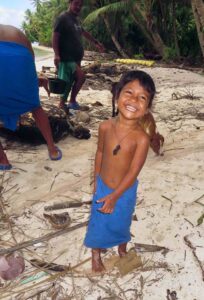
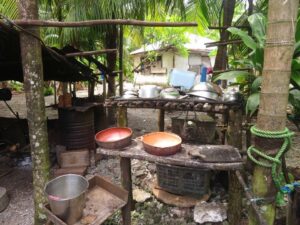
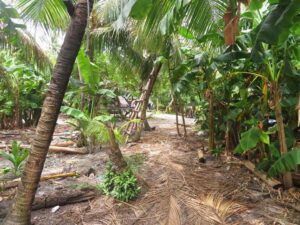
Also here in Elato we prefer to help instead of paying the landing fee, so the next 3 days Reto fixes 4 broken VHF radios, finds out the common problem of all the inverters and teaches John and Mano how to repair them without any spare parts…
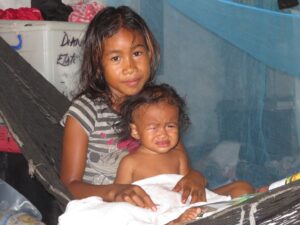
We immediately rush to the boat to find some homeopathic treatment for her. Also we consult our homeopath at home, and with the treatment of his advice after two days she seems to feel a bit better.
A few days later when the ship from Yap arrives Reto tells the father that a visit to the hospital in Yap would be a good idea, now that he has the possibility. His reaction shows us though that the issue is not the highest in his priority list.
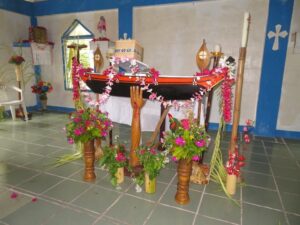
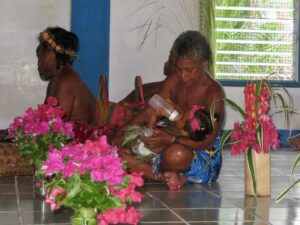
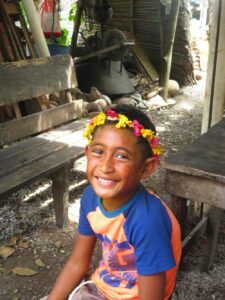
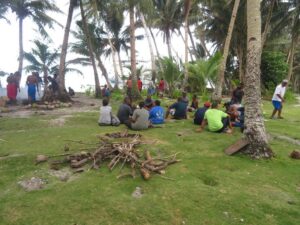
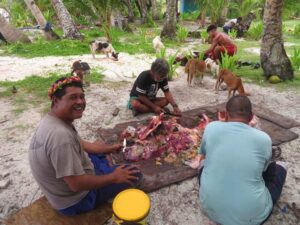
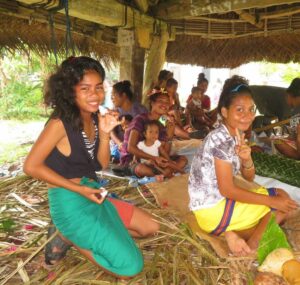
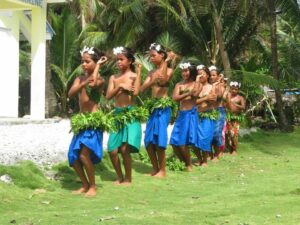
With a lot of expectation we go to the Easter Sunday party, for days the preparations have been going on.
But as we see it, the main difference is that even more turtles are slaughtered and that the drinking already starts at 10 am and not only at 2 or 3 pm.
Of course the situation is special since the ship from Yap just arrived and the crew gives away trays over trays of cold beer which is highly appreciated. But even without that beer they would just drink their tuba.
Late in the afternoon we finally get a basket with food, which we eat with a lot of appetite, but also this time we regret it a few hours later. Reto vomits the whole night, the next morning we are both completely exhausted and this although we had planned to sail on.
No big deal with 4-5 Beaufort from behind, after 4 days we drop our anchor in front of the little town of Colonia in Yap. Due to our postponed departure though it is a Saturday morning. According to the information we have the overtime fees should be 6 Dollar per hour, we think that is acceptable.
Yap
We agree with the officer of Port Control to meet just after 8 am. First we meet Health, 2nd Quarantine, 3rd Environment, 4th Immigration, 5th Customs and 6th Port Control.
All of them are friendly and polite, but it is the 3rd time now we have to do the full check in process here in FSM, just like it would be a foreing country every time and not a part of a country that pretends to be one.
We have to pay the expected 18 Dollars for Quarantine, another 50 Dollars for Port Control and 20 Dollars for Overtime.
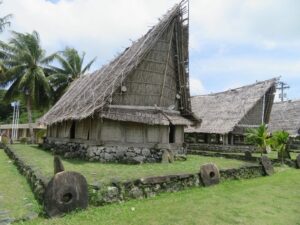
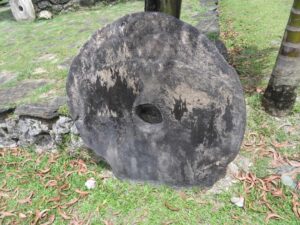
At least, the internet works after a waiting time of a few hours activating a new data plan.
A short walk through town is quickly done, I am more than happy to find a few eggplants, cucumbers and cabbage.
On Sunday we hike up the highest elevation, for sure at least 140 m high!! But we have a nice walk, we find a few more Japanese guns, a nice view down to the harbour and a papays tree ;-).
On Monday morning like every day we first take a look at the weather. “Oh no, but what is this here coming right onto us?” Reto complains desperately. In three to four days quite a system of depression is supposed to reach Yap with the perspective of 40 knots plus from all directions as the system seems to be hovering around the area.
Immediately we decide “let’s get out a here!”
A few minutes later we have a bad surprise in the customs office. They want 52 Dollars overtime “Call out” fee, because they were the two of them and even though they only spent fifteen minutes with us, they charge 3 hours for the total. When we complain at least they reduce down to 44 Dollars (maybe there was a mistake somewhere), but we still are pissed.
Already prepared the same caluclation is waiting for us at immigration, but due to cheaper rates? and only one person we only pay them 20 Dollars. So the total for 2 days in Yap amounts to 144 Dollars, an expensive stop we find after all.
You like this post? then share it on Pinterest!
We leave for Davao in the Philippines, knowing that the wind we be light after the first few days. The first 24 hours we have 1 to 2 knots of current against us and only make 88 miles, then we set the Parasailor and the current decreases, so we are happy to make 130 miles per day the next two days.
Then the wind is not light any more but completely gone for the rest of the passage until Cape Augustin. The sea is flat, the engine is running.
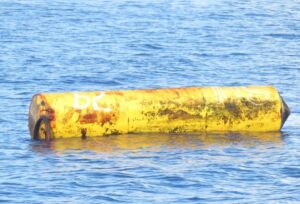
Soon after Yap we see our first FAD floating by. These Fish Attraction Devices are approximately 3 meters long with a diameter of 0.5 meter and seem to be made from steel. During lunch on the 5th day we pass one of them within 20 meters and almost choke, we didn’t look out at that moment.
Shortly after 2 Mahimahi bite, one rips off, the other one goes into the fridge. The only fish we caught in 1300 miles on the way from Elato to the Philippines!!!
From now on one of us checks the horizon every few minutes not only for vessels but mainly for FADs, at least during the day. But what in the night? There you can only pray.
After one more night praying though we decide to drift the last two nights, the current is in our favor, so we move in the right direction.
First contact in the Phillipines
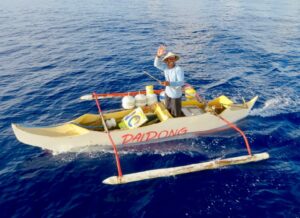
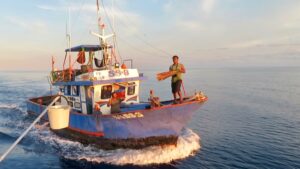
At the same time with the FADs far out (200 miles away from the coast!) the first Indonesian fishing vessels appear.
Mostly it is one bigger vessel with an armada of small bangkas, which are well motorised and incredibly fast. When the first one floats right next to She San without me hearing him approach I first have to emit a cry.
Then I see that he shows us a tuna. “What do you want for it?” Reto asks him and from his hand we understand that he wants cigarettes. The same game is repeated a few times, but we only get two fish on board. One has too many small fish (too much work) and one larger vessel have dried fish (what do I do with that?)…
The plan with the drifting is working out pretty well, after 7 nights we arrive at the Cape Augustin at 7 am in the morning, surrounded by hunderds of fishing vessels and a labyrinth of fishing nets going back up the Golf von Davao. At 5 pm we drop our anchor in front of a village.
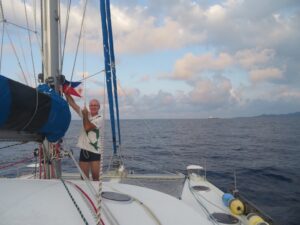
Sitting up front for a arrival and sundowner beer we realize that we just finished crossing the Pacific, more than 17 000 Miles since Panama City!
The Pacific was absolutely amazing and we will for sure miss it!! But we also have that funny feeling of curiosity of being in a new country, even a new continent…
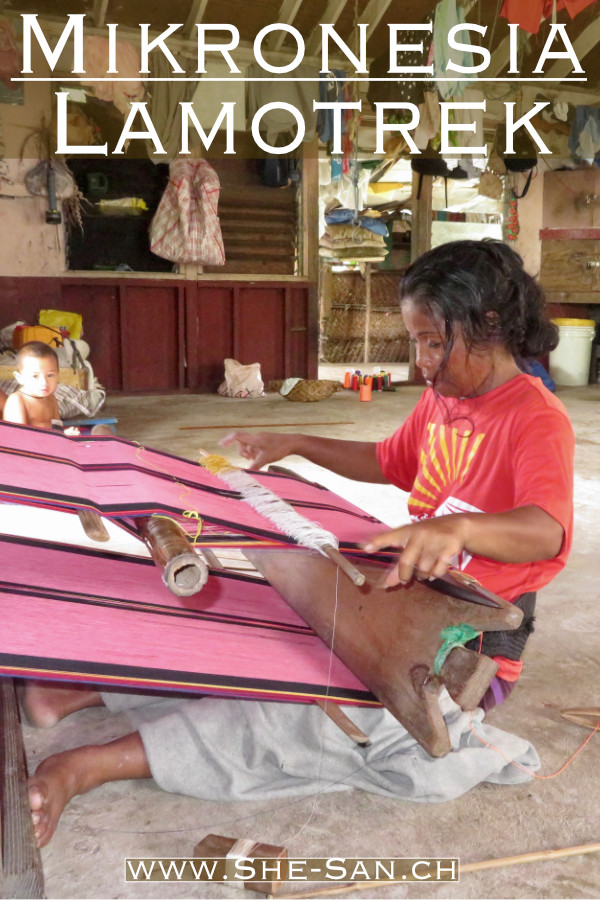
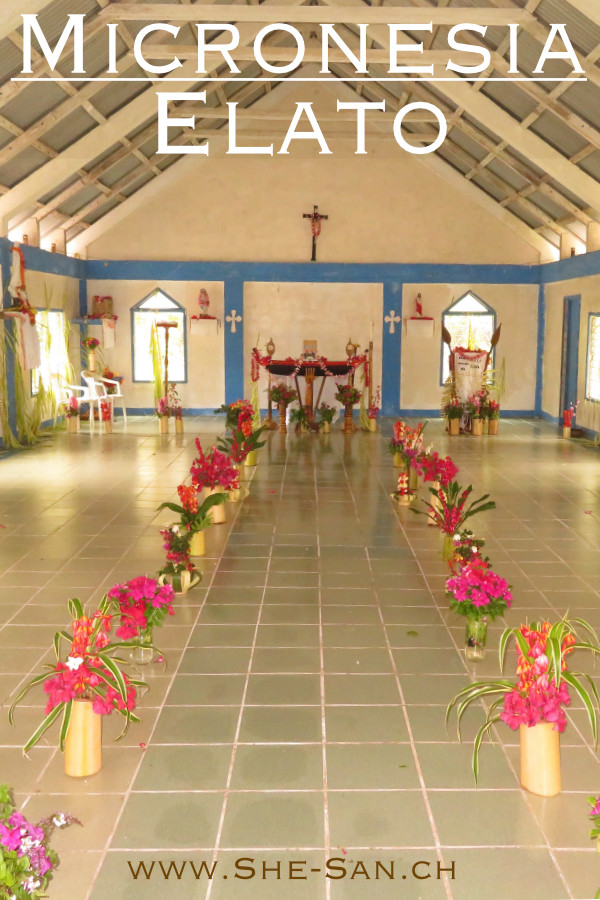


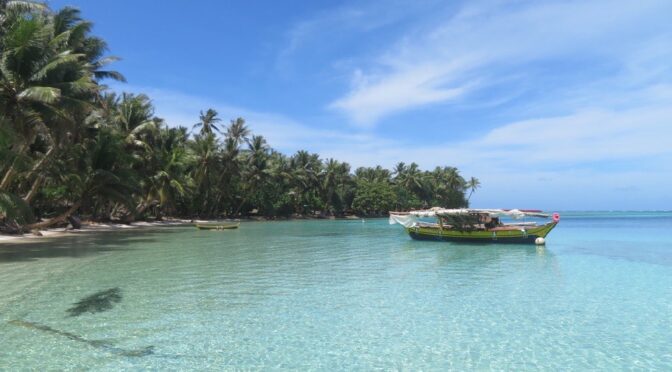
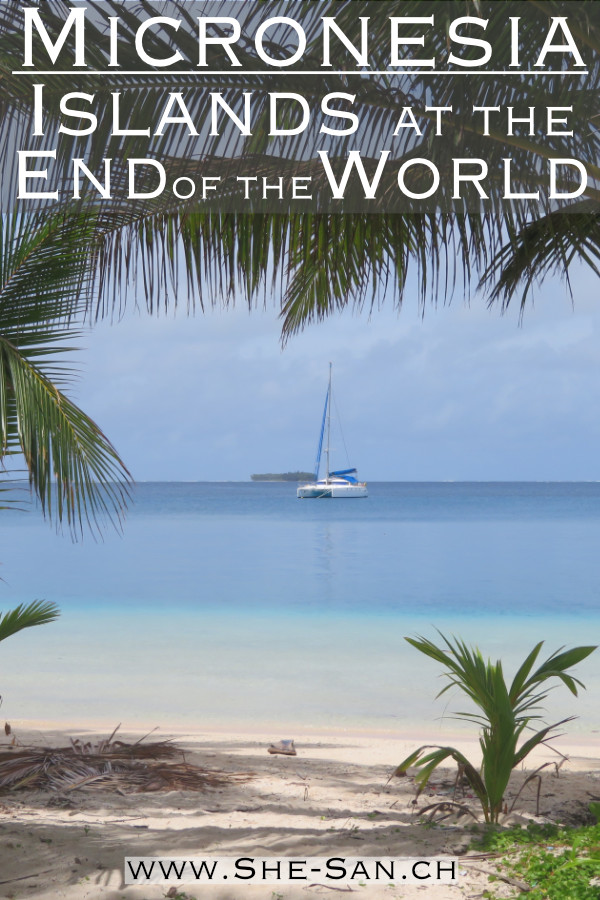
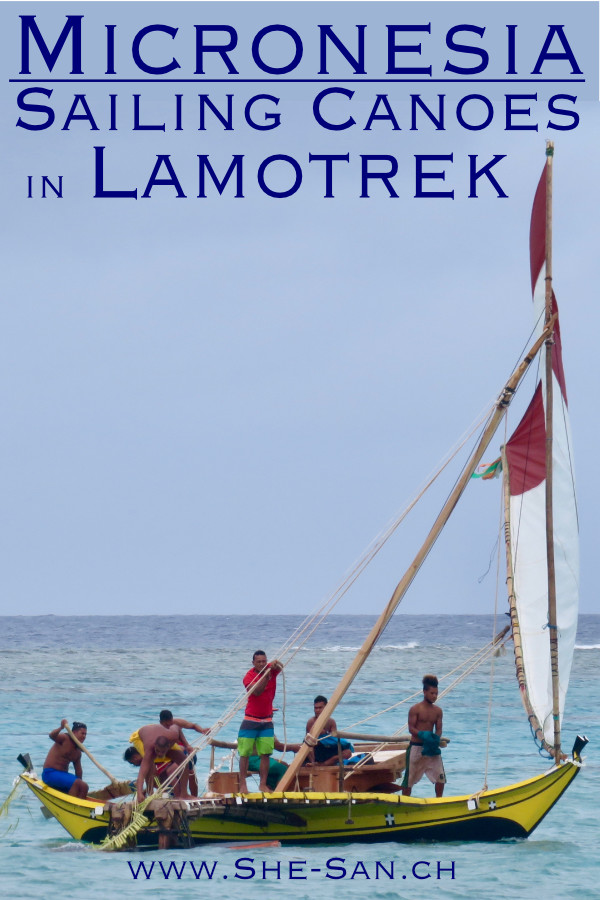
Wow! What a wonderful time you’re having, apart from the illness and exorbitant fees. A fantastic blog. Are you planning to come to Indonesia? xx
Yes, we are on our way now 😉 Plan to hop over to Karakelong tomorrow, unsure when we will get some internet though…